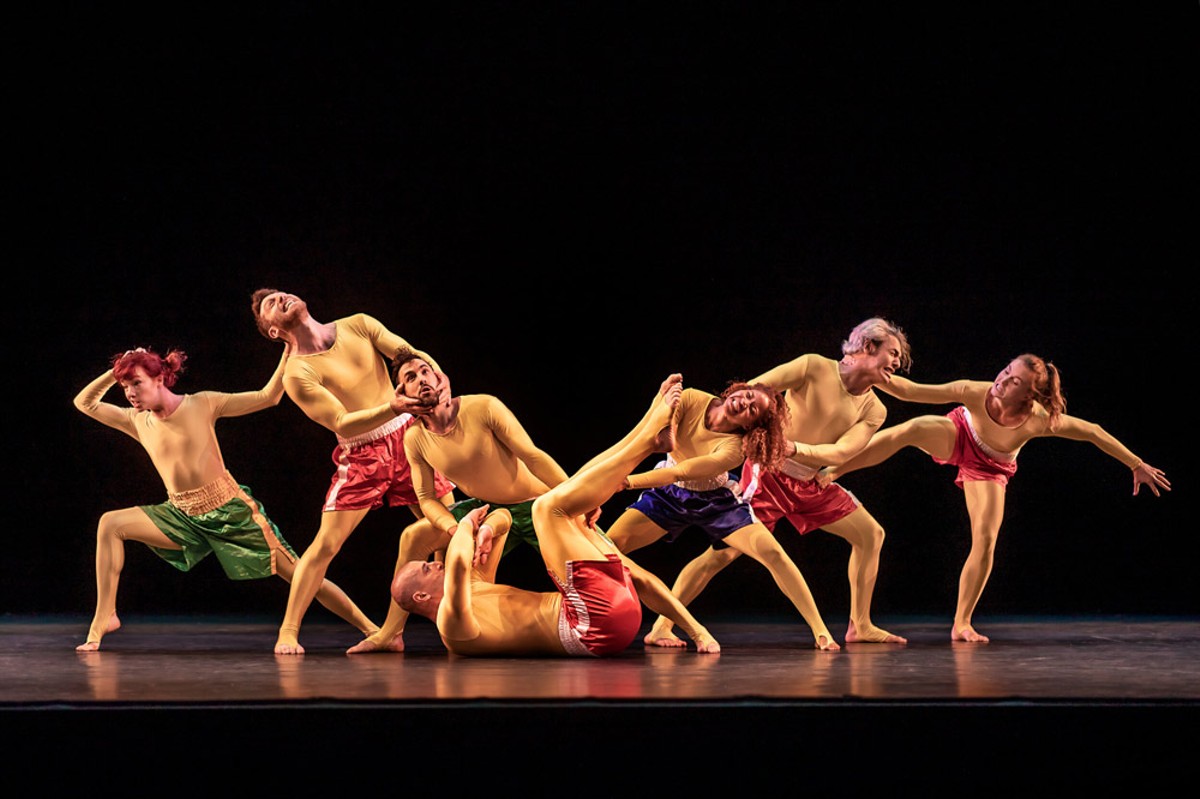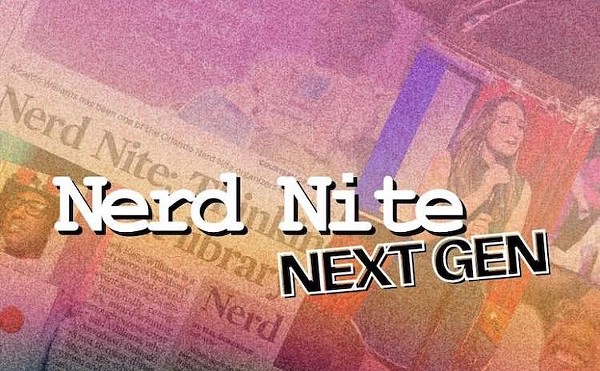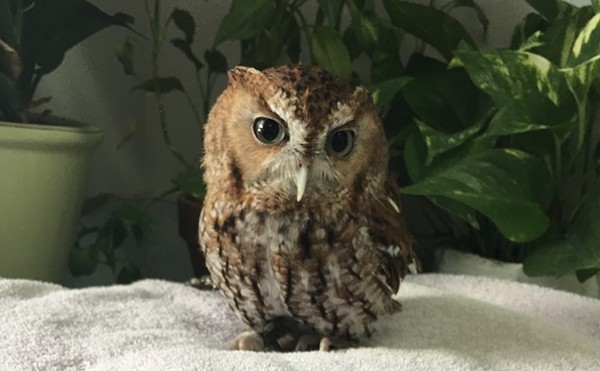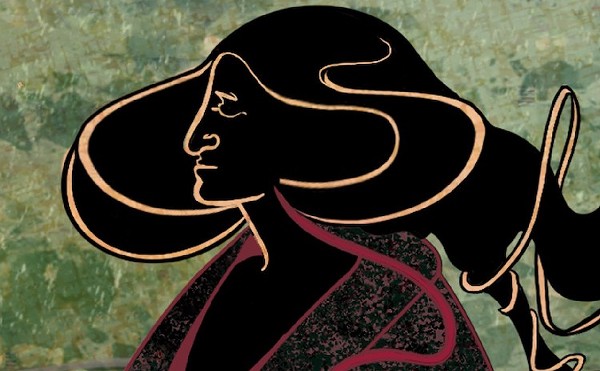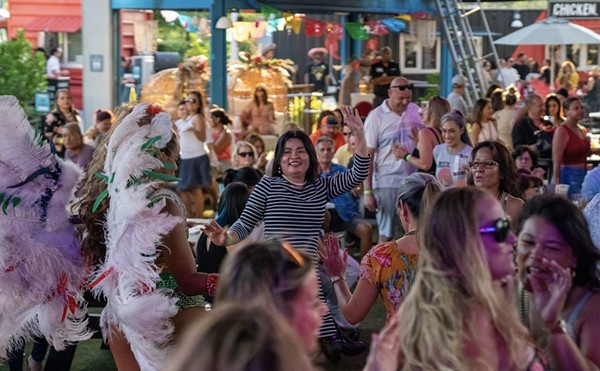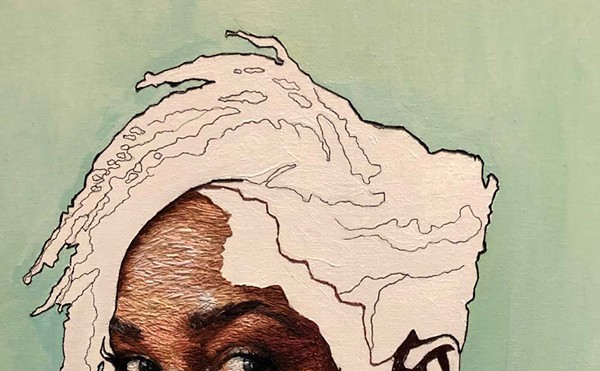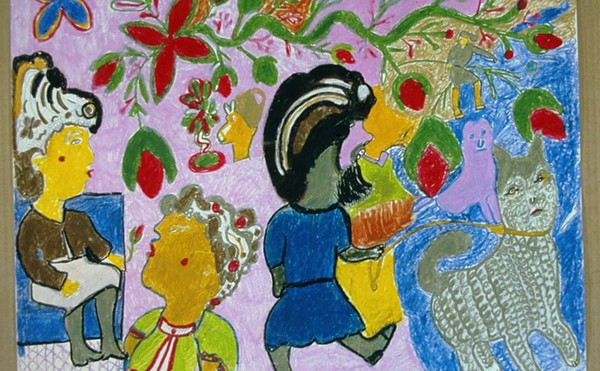It's been a half-century since the groundbreaking movement troupe Pilobolus first formed, and Orlando fans can celebrate the acclaimed company's legacy when their Re:Creation tour stops at the Dr. Phillips Center for the Performing Arts on Tuesday, Nov. 7. Mainstream audiences might remember their signature shadow-dancing technique from the 79th Academy Awards, or their interactive "All Is Not Lost" video with OK Go. But the humor and diversity of Pilobolus' mixed repertory — whose six segments include collaborations with everyone from SpongeBob writer Steven Banks to "Radiolab" podcaster Jad Abumrad — ensures an evening of modern dance that's accessible to anyone, even if you don't know Martha from Merce.
Recently, I video-chatted with Pilobolus' new generation of leaders from their offices in Connecticut: Renée Jaworski, a trained dancer for over two decades, now executive director and co-artistic director; and Matt Kent, a martial artist who joined the company over 25 years ago without any formal dance experience and rose to become artistic director.
Here's a small sample of our freewheeling conversation, which ranged from the role of AI in the arts to where they'll find the next generation of Pilobolus dancers.
How is ChatGPT helping you develop new work?
Matt Kent: We're working on a new duet and we were using it in the most fun way, which is Renée and I having a couple of martinis and literally just typing in "we're thinking of this" and seeing what it does. Then at the end, we said, "can you suggest some rabbit holes we might go down?"
Renée Jaworski: It was making different kind of connections than I'm able to make, because of the vast encyclopedic stuff at its fingertips.
How did you transition from onstage artist to executive leadership?
RJ: It is because of Pilobolus' nontraditional approach to art-making and dance-making that brought us together. ... It's very common for us to approach everything from a beginner's mind. The idea that a dancer who was very highly trained can become the executive director is also not beyond the scope, because there's institutional knowledge that has very little to do with dance. It has to do with community building; it has to do with knowing how to collaborate, knowing how to get other people to collaborate as well. We're very interested in working with the people where they're bringing their entire selves to the project. None of us are standing in front of a room and saying "step right, step left, put your hand here, do it on this count." We're all coming together and building a world together, and so each piece is diving deep into one's psyche and finding out what you can bring to that world, physically and emotionally.
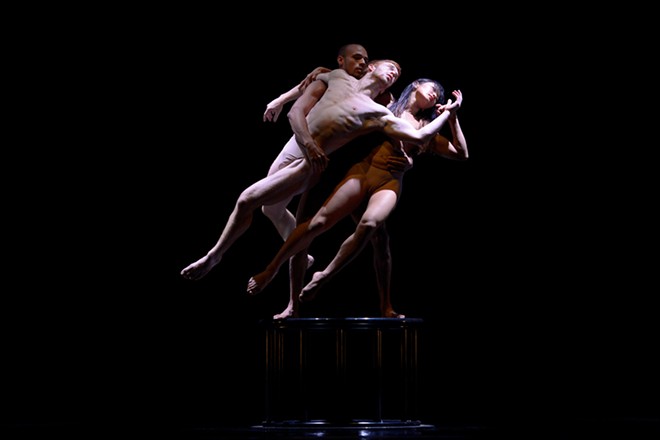
What are your first steps when building a new piece?
MK: We like to say the smartest person in the room is the room. So when we come to a new work — like today, we are making the new women's duet, which is a rare gem in Pilobolus' 50-plus history — [and] we started with a poem, and then we just had a little conversation and began improvising. Then it's our job as choreographers [to] watch them and say, "Well, wait a minute, the move you just made reminded us of this." And then they'll lean into that, and then that'll lead into something, and we're bootstrapping in a way and ratcheting ourselves up. All of the pieces that you're going see in the show were created in a very similar way.
How do you communicate with collaborators who don't have dance experience?
RJ: When we're collaborating with people who don't have a dance or movement background, they don't have the language to help move the dancers around. It's usually they're coming in with a literary background, they're coming in with some other kind of story [or] narrative type of background; it's all about the conversation and the world-building. Then the dancers hear all of this and start improvising using this information that's floating around in everybody's heads, and inevitably they will see something that is a physical representation of what we've been talking about.
What's your response to today's numerous imitators of the shadow technique Pilobolus debuted in the 1970s?
MK: They're flattering us with imitation. We're busy making the next innovation. It's not worth thinking about except to be grateful that you've done something cool enough that other people want to copy.
RJ: Whatever moves the dance world forward and keeps people interested in moving and dancing, and watching dance, we're behind it.

Who is Pilobolus' target audience today?
MK: We've committed this sin of being accessible for some of our artistic-minded colleagues, but what I think is cool about Pilobolus is that we make work for what I call "the husbands." You don't have to be a husband, you don't have to be a guy, but whoever is the person that's been dragged to the theater, [because] we're a gateway drug to dance. ... You don't have to know anything. You don't need an Ivy League art education to come and see the show.
Where is the next generation of Pilobolus dancers coming from?
RJ: The pandemic has changed everything [about] the way that we do auditions and things like that, and the way that dancers find us is a lot online. And so we are looking all over the world for dancers, all the time.
MK: We don't know where the next [generation] is coming from. We have faith that it's happening, and it's something we talk about a lot. It's our wish that Pilobolus goes on for another 100 years — you know, why not? — so we have to build and find those people, [but] we don't even know what the future of dance touring [is], what technology, all that stuff could change. So what's more important is to find a group. I think what we're looking for is people who like to live in a rural environment and make art with their cool friends.
Location Details
Follow us: Apple News | Google News | NewsBreak | Reddit | Instagram | Facebook | Twitter | or sign up for our RSS Feed

